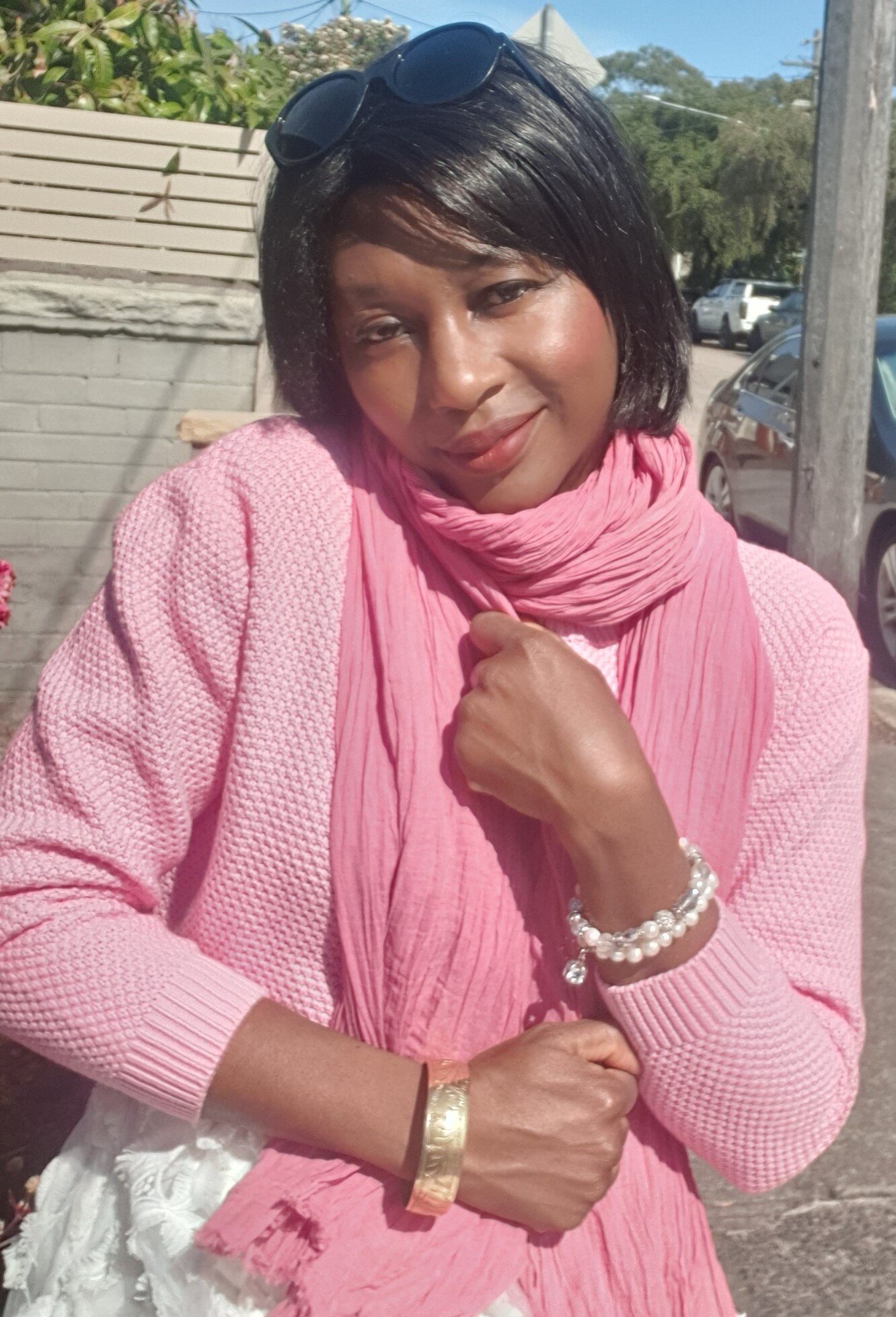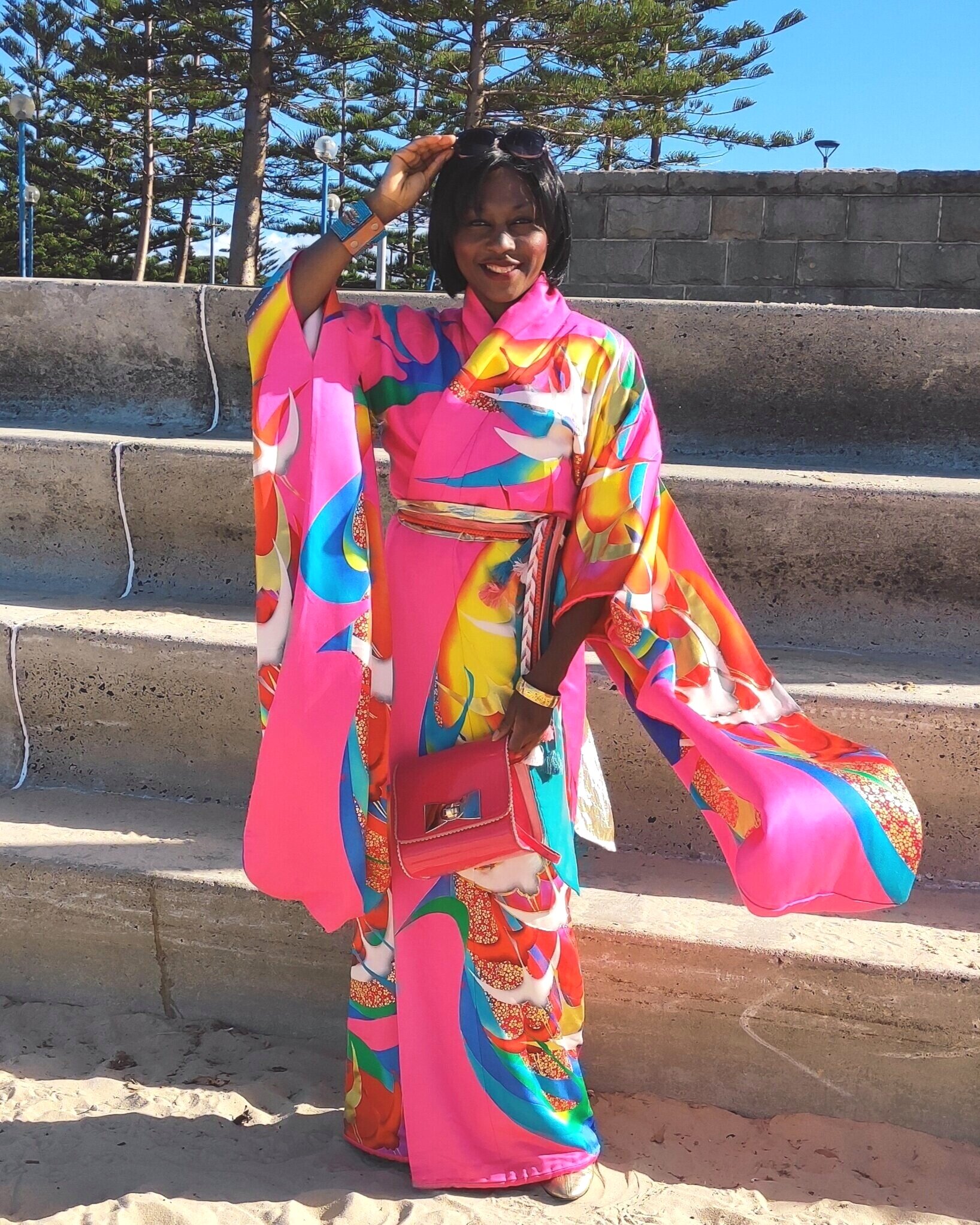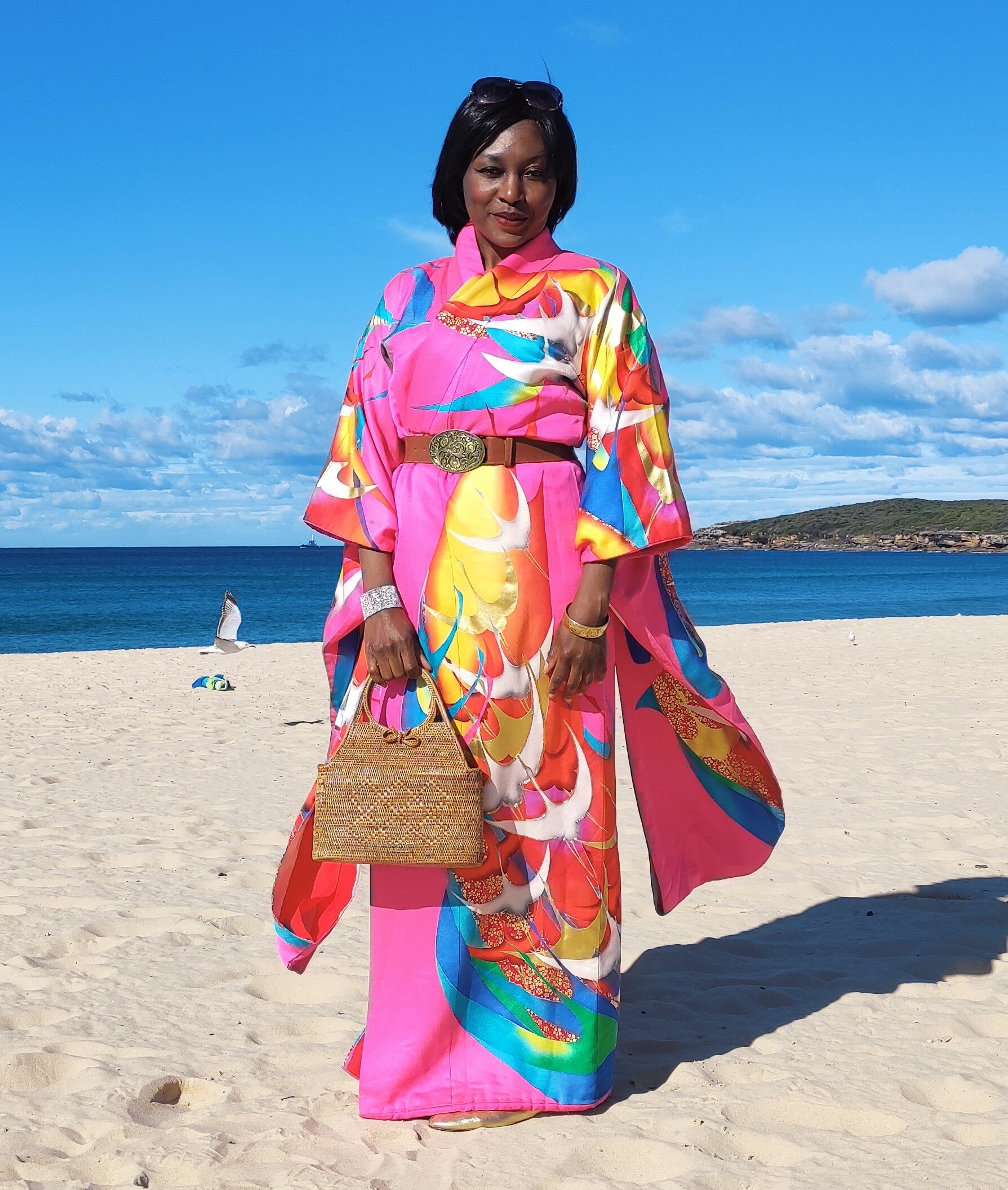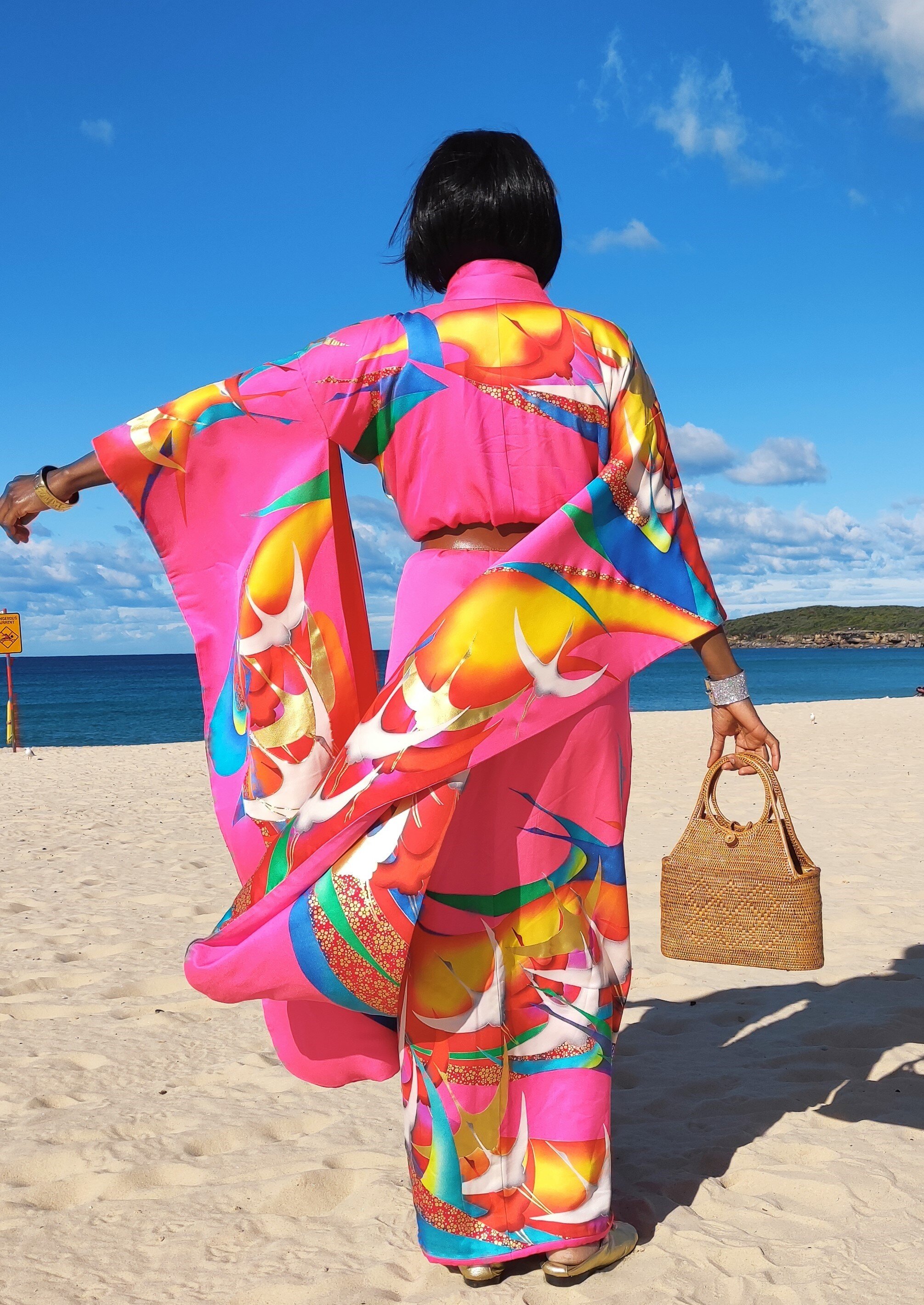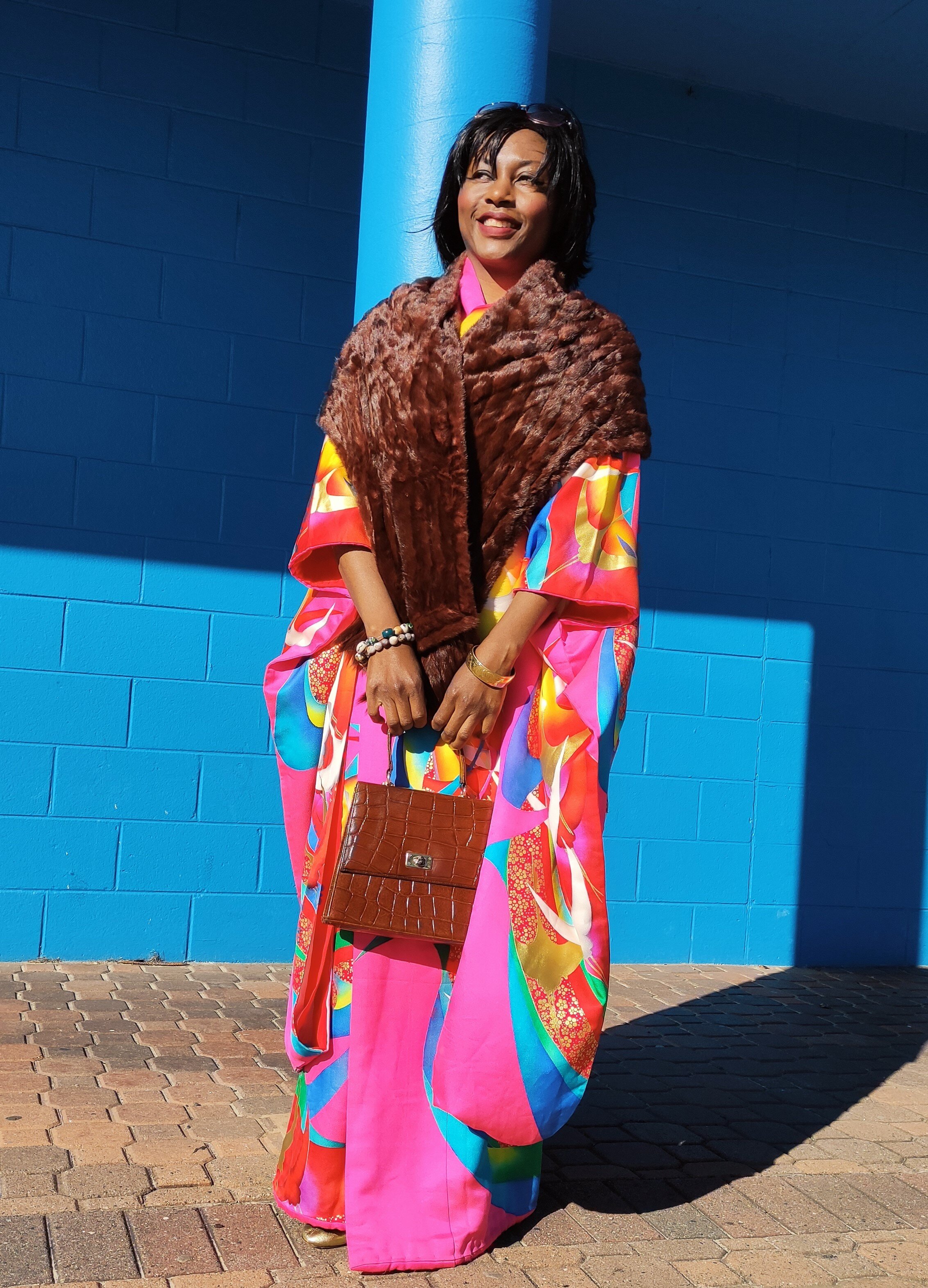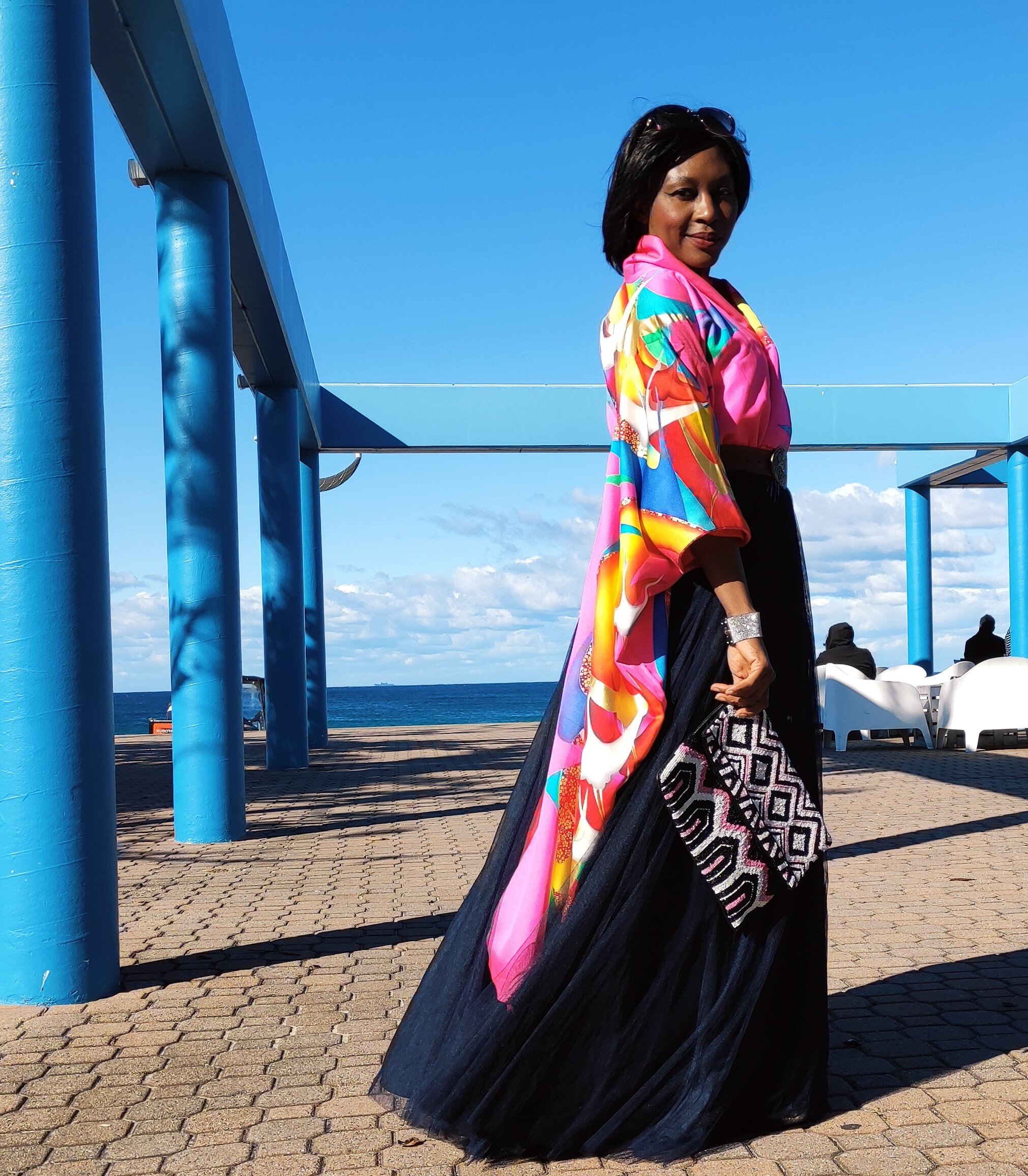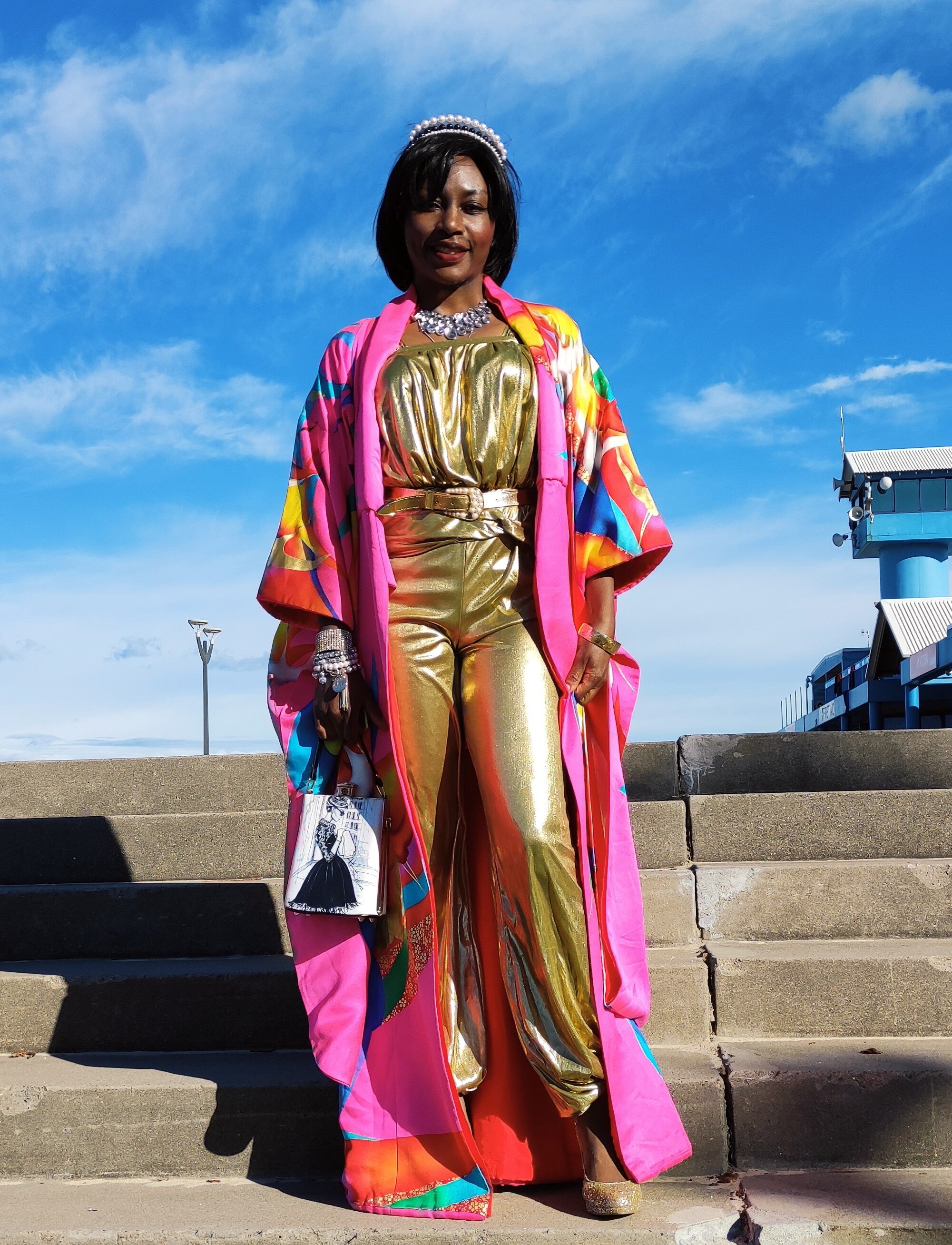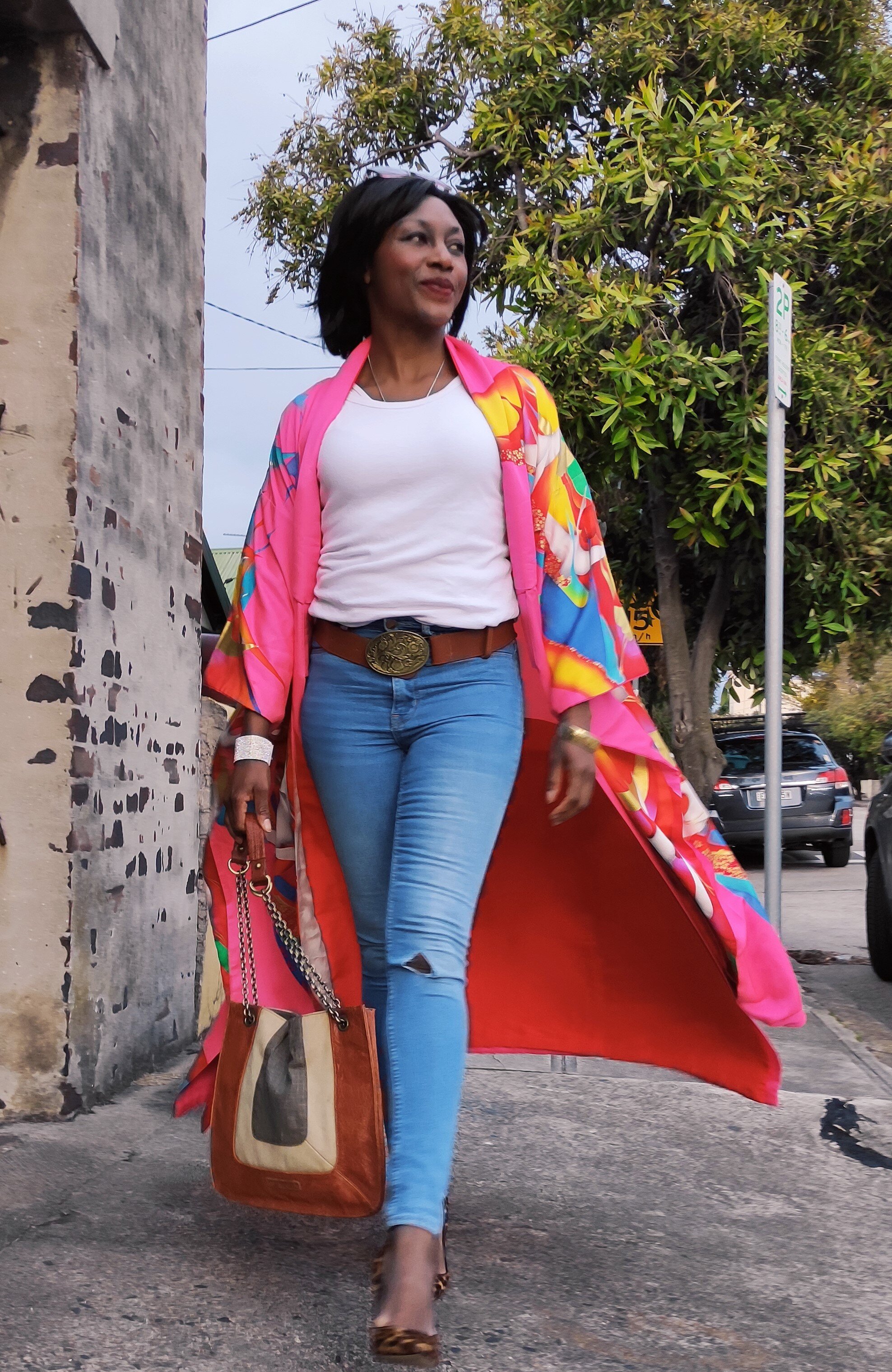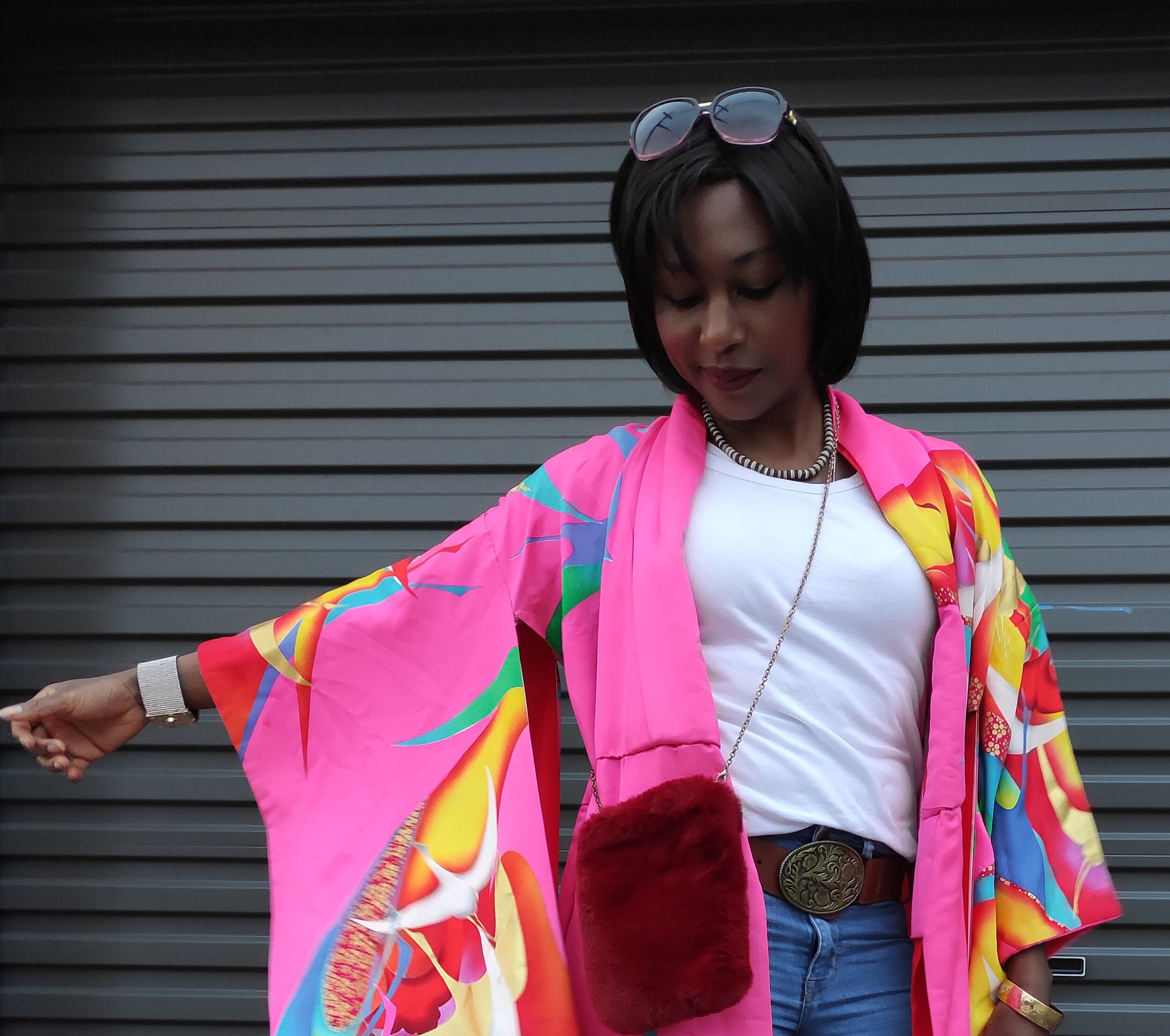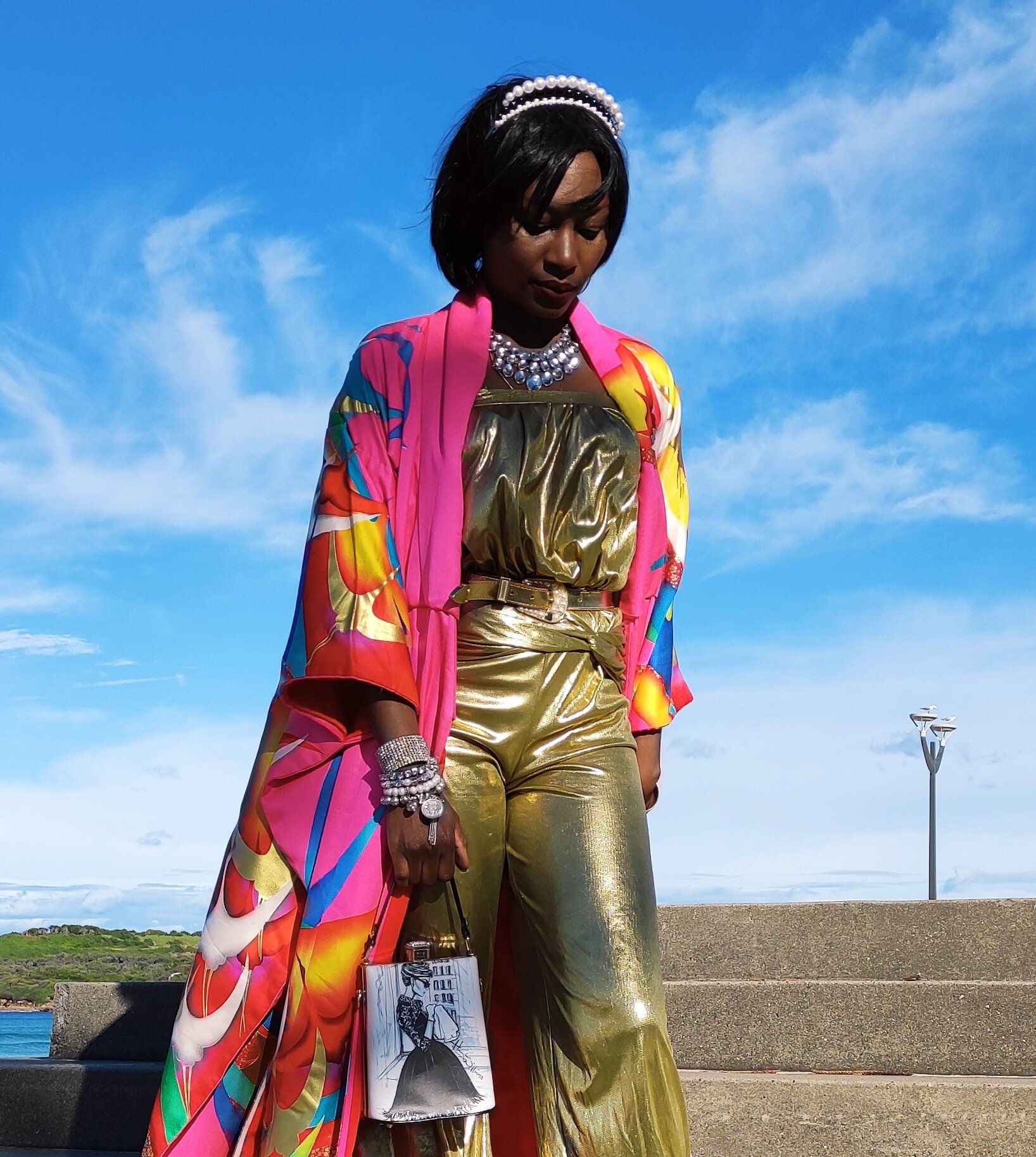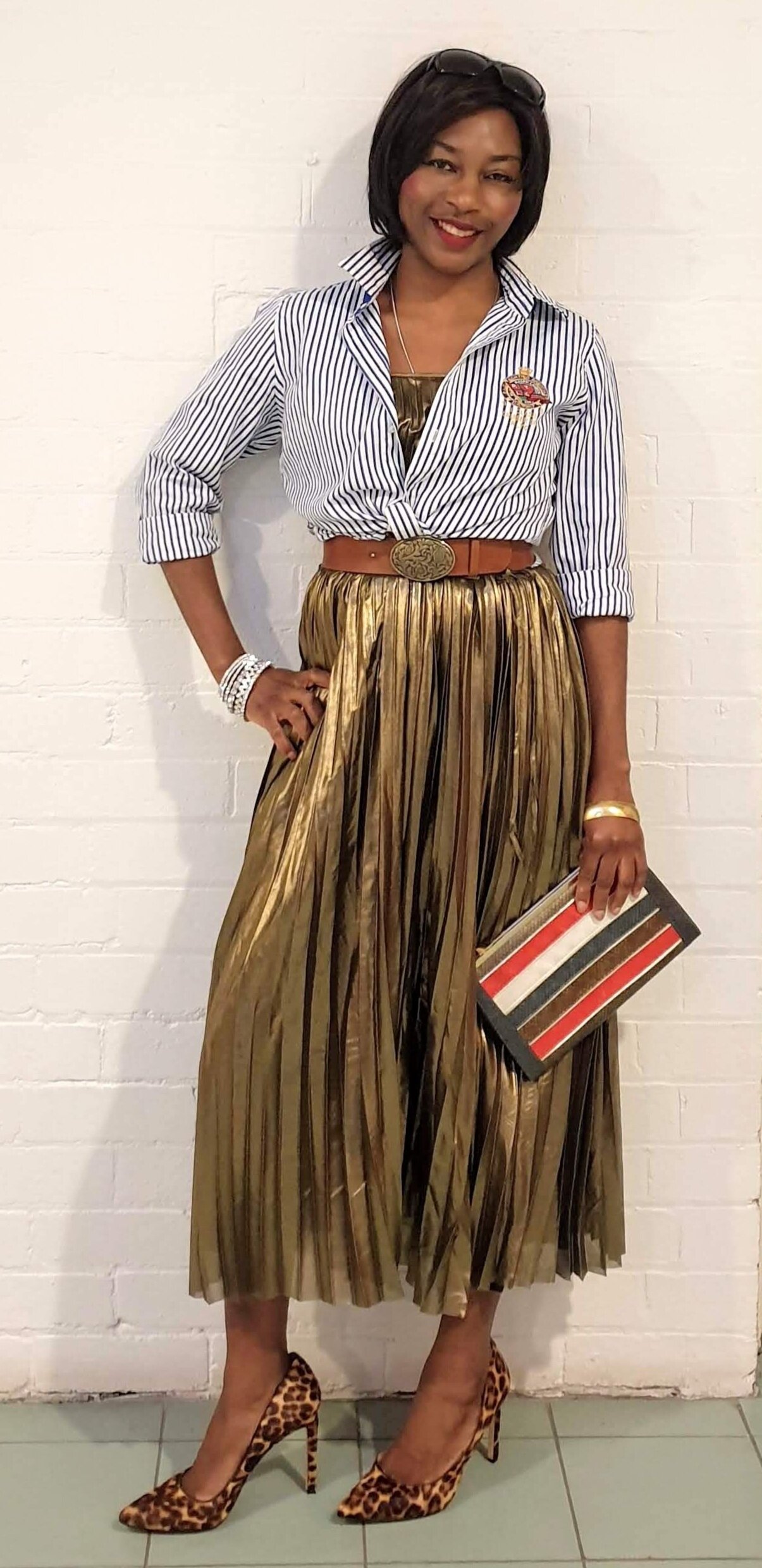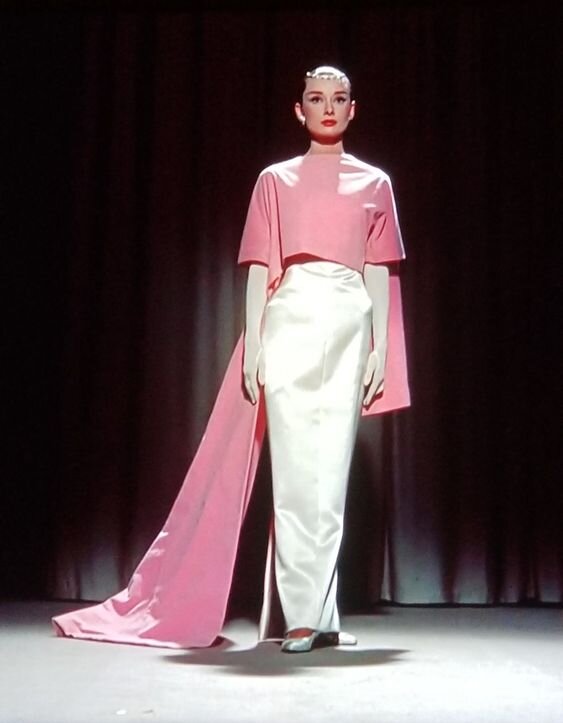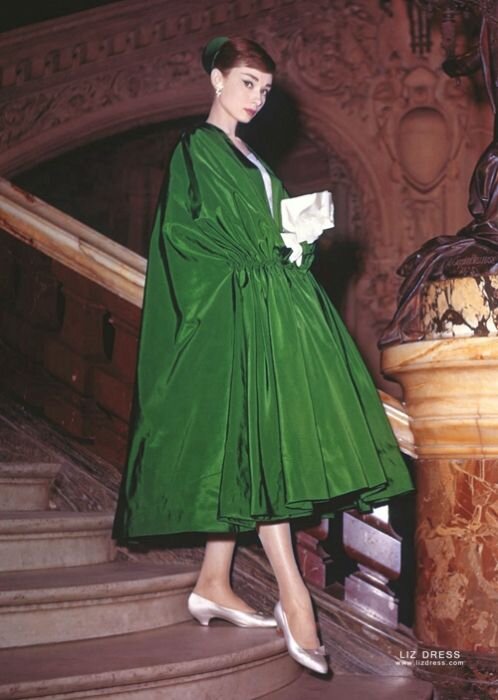In all my years of being a style enthusiast, I’ve acquired many scarves from thrift and vintage stores, but I never took the time to learn how to style them. Until I received this beautiful pink cheeky rose naturally dyed handloom scarf from Fabric of Humanity.
Fabric of Humanity is a social enterprise that works with skilled artisans in rural India that use hand-looming and natural dyes. Their scarves are woven, hypoallergenic and compostable. I love the fact that they are challenging the power systems that cripple the opportunities and human rights of people to live prosperous lives. They ensure artisans are supported, empowered and paid liveable wages. Not only is this the right way of running a business with makers in the global South, but it’s also a way to to boost local economies in poorer communities by paying workers enough to enable the possibility of climbing out of poverty and the opportunity to thrive. It gives possibilities for better access to education for workers and their children and also healthcare. These are some of the fundamental ways that influence socio-economic development in communities in the global South. Supporting social enterprises like Fabric of Humanity goes so much further for peoples’ lives than shopping with conventional fashion brands.
This is the scarf that inspired me to raise my style games where scarves are concerned. It’s so pretty that I wanted to restyle it in several ways, with a couple of pink outfits. I used a 1980s retro-vintage pink dress, preloved pink coat, preloved pink jumper and preloved pink clutch purse. Why? Because having many different ways of wearing an accessory like this scarf inspires you to use your clothes more frequently which means you get more wear out of each item. You end up realising you don’t need to buy more clothes for different events and occasions in your life. Just restyle, mix and match pieces in your closet and play dress up in your own wardrobe! Ultimately if the majority of all of the fashion-loving world does this, we’ll have far less textile waste going to landfill.







